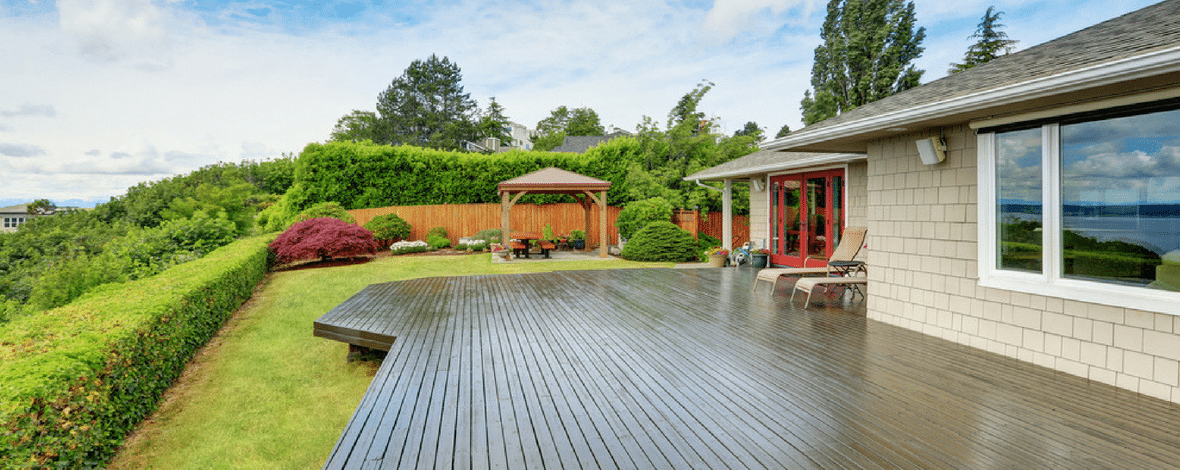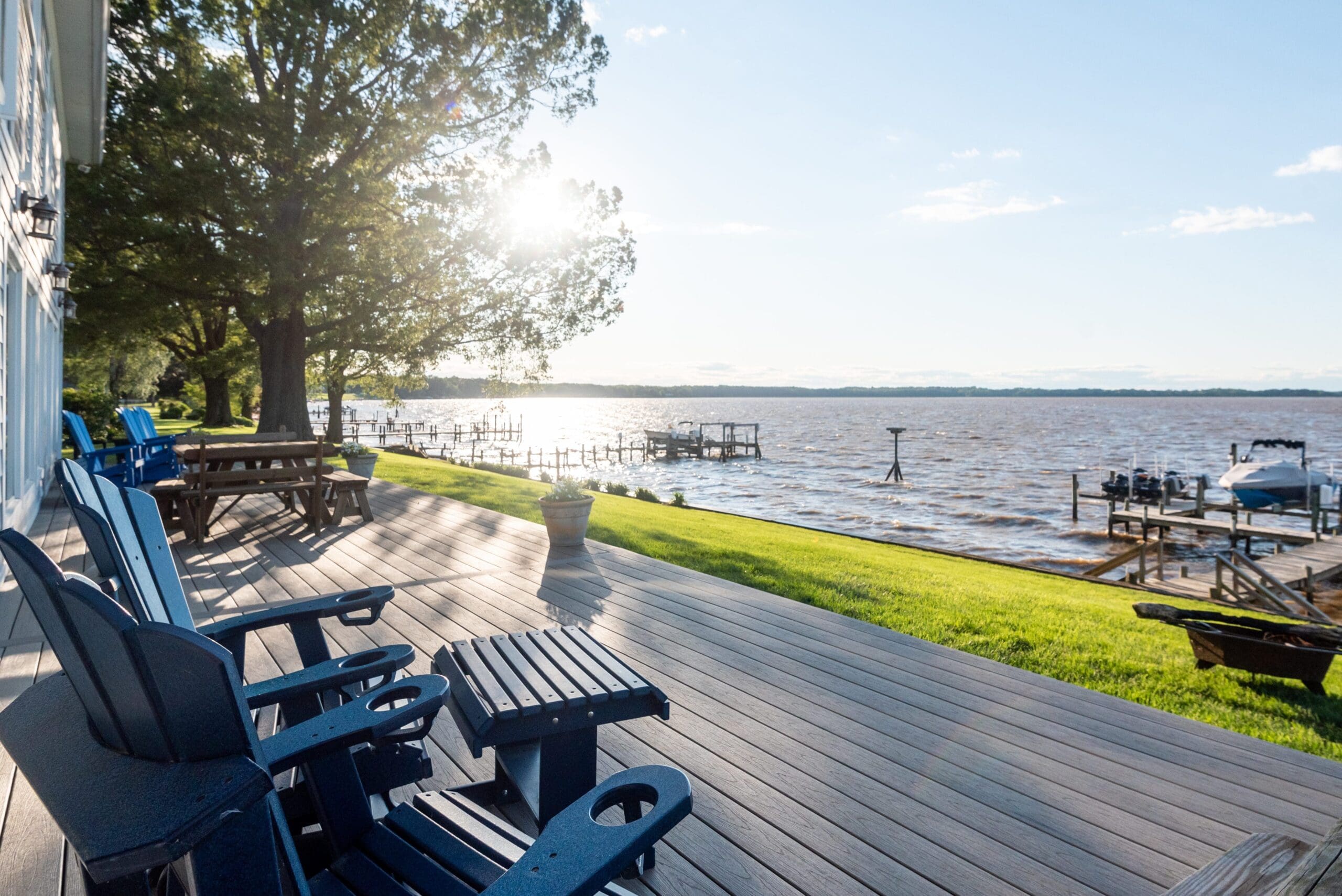Your outdoor deck adds beauty, function, and value to your home, and when fresh and newly stained, it will fill any homeowner with visions of cozy dinner parties and fun gatherings outside. However, months of the sun’s damaging rays, standing water, and fallen debris can cause the wood of your deck to fade or become gray. What to do? Periodic cleaning and restaining of your deck will keep it looking beautiful for many years. With a few tools and some basic know-how, you can tackle this job yourself.
Step 1: Clean
As with most DIY projects, preparation is critical. The first step is a thorough and deep cleaning of your deck. While you should always keep your deck reasonably clean and free of fallen branches and leaves (a leaf blower is the perfect tool for this), cleaning for the purposes of restaining requires specialized materials and tools:
- Cleaning should be done when the outdoor temperature is between 50 and 90 degrees Fahrenheit: any warmer and your cleaning solution will evaporate before it fully settles into the wood, and any cooler, the solution will not absorb properly into the grain of the wood. Review the recommendations on the product’s label for specific guidelines.
- While it may be tempting to utilize a pressure washer for this job, it’s best avoided unless you are proficient with a washer. The strength of the water pressure can easily gouge and permanently damage your deck’s surface; the power is just too high. A strong setting on the sprayer nozzle of a regular garden hose is a safer bet.
Once your deck has been thoroughly rinsed to remove all debris, it’s time to employ a specialty cleaner and some elbow grease.
- While chlorine bleach may seem like an obvious and readily available choice for deck cleaning, it should not be used as it will damage the wood.
- Sodium percarbonate — more often known by its brand name of Oxy-Clean — is safe for most woods but will darken cedar or redwood decking.)
The aisles of your home improvement store are filled with cleaners designed exclusively for the purpose of removing dirt, mold, and bacteria from wood surfaces.
Before commencing use of one of these products, however, be sure to take a few precautions.
- The chemicals in these cleaners may cause damage to vegetation. Loosely drape nearby plants and shrubs with protective tarps or plastic.
- If you have a raised deck over a patio or other usable space, be sure to protect that area, as well.
- Follow all of the cleaner’s label directions and use gloves and eye protection for your safety.
- The cleaner can be applied with a garden sprayer or roller. Once the solution is applied, use a stiff wire-bristled brush to scrub your deck’s surfaces.
- When you have finished scrubbing your deck, rinse it thoroughly and allow to dry fully, a process which will take at least 48 hours.
Step 2: Inspect
Next, inspect your deck carefully. Any loose or popped nails should not be pounded back down but rather be removed and replaced with deck screws. If any board contains rot that goes deeper than one-half inch, it should be replaced.
Step 3: Smooth
Now that your deck is clean, it’s time to determine if it requires new stain or sealant. Simply drop a bit of water on the surface of your deck: if it beads, no further treatment is required. If it absorbs, however, you will need to lightly sand and refinish the decking.
Similarly to the pressure washer mentioned above, it is tempting to use a power sander to smooth your deck’s surface. Unless you are very comfortable using a power sander, an inexpensive pole sander loaded with 80 grit sandpaper will help smooth any course spots.
Step 4: Seal
Once your deck is lightly sanded to smooth any wood grain eruptions that may have resulted from the cleaning process, the final step is sealing the surface to protect from future damage caused by exposure to nature’s elements.
- Painting your deck is not recommended as it is not designed to serve as a protectant for wood. While it may look great for a period of time, the sun will soon cause the paint’s surface to crack and peel.
- DO choose either a clear wood preservative with UV protection or an exterior stain in solid or semi-transparent finish. Carefully consider your deck’s usage when making these choices: a solid stain looks great and is practical for railings and banisters, but it shows heavy foot traffic easily.
A two-tone or multi-tone deck with solid railings and a more transparent yet traffic friendly finish on the wooden deck flooring makes a beautiful and practical combination. Again, follow all of the sealant’s label instructions and utilize safety precautions. If additional questions arise, contact a local deck builder for assistance.
Step 5: Protect
Planned outdoor areas are a wonderful extension of your home, but they do require specialized maintenance simply because they are outdoors and exposed to the elements. If neglected, a deck can become a tired and worn-down hazard rather than the beautiful asset it is intended to be. This fate is not, however, inevitable. With a bit of time and effort, your deck will serve as a lovely and functional gathering place for many years to come.
If you are looking for help with wood deck repair service, or need a deck replacement contractor in Richmond, our team is here to help. We can evaluate your existing deck, and recommend the best option for your budget, and vision. Contact us today to learn more about our deck repair and restoration services.








